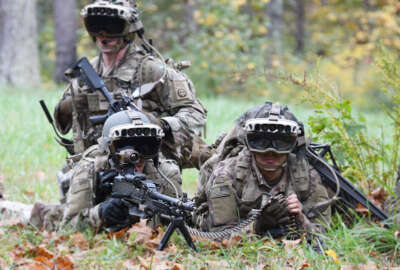The war between Russia and Ukraine has provoked a debate here in the U.S. Who should rebuild the Defense Department supplies shipments to Ukraine have drawn down?
Specifically, should it be expanded contracting with industry or a buildup of what’s known as the government’s organic industrial base? Or should the government enlist industry to make up the shortfall?
The question in some ways forms a proxy for wider questions of who should do what. On the specific weapons question, though, DoD in reality is working on a variety of ways to boost production.
“Organic” doesn’t refer to people who eat wheat germ. The term applies to factories owned and manned by the government or owned by the government and staffed by a combination of federal employees and contractors. The Army Materiel Command’s organic industrial base spans a couple of dozen depots, arsenals and actual factories. The other armed forces also have organic industrial bases.
As an aside, about 12 years ago I spent a day at the 208-year-old Watervliet Arsenal in the New York town by the same name. Part of the Tank-Automotive and Armaments Commend, the arsenal is busy these days, making tank parts and refurbishing gun barrels.
A basic item — the 155mm howitzer cartridge — exemplifies the issue. The nearly 100-pound rounds are made by the Scranton Army Ammunition Plant, a unit of the Joint Munitions Command. General Dynamics Ordnance and Tactical Systems and several other companies also make them. The projectile might seem like a commodity, produced by the millions. In reality, each shell requires great precision and a surprising number of highly refined materials with a long supply and logistics chain. Defense News reported the other day that the Army is building or paying for production lines to boost 155 mm shell production sixfold.
The 2023 appropriations include $2.5 billion for modernizing the organic industrial base. It’s a priority of Army acquisition chief Doug Bush. The Army has focused on the base for more than a decade. It’s a big topic among the think tanks and organizations such as the Association of the U.S. Army, which last year reported a $16 billion plan for the next 15 years.
Industry has its proponents, too. Jerry McGinn is the irrepressible executive director of the Center for Government Contracting at George Mason University. He’s a former Defense policy official, and for that matter, Army infantry officer. He estimates the supply chain for ordnance and weapons systems numbers 200,000 companies. McGinn prescribes a four-part program to improve the defense industrial base, colloquially known as the DIB, and the government’s relation to it.
Most of the companies in that 200,000, McGinn says, are subcontractors, and many of them are sole sources. Which means whether prime contractors or government factories do the work, they’ll be dealing with the same supply and price fluctuations. Some of McGinn’s recommendations would help both industrial bases. For instance, evening out funding levels for an item, versus funding levels that swing back and forth each year as much as 50%. But mainly he focuses on boosting industry capacity.
The American Federation of Government Employees has joined the push for the organic industrial base. It urges Congress to beef up for the purposes of rebuilding weapons systems and ordnance supplies. AFGE’s extraordinary letter to Defense Secretary Lloyd Austin states the DIB is “inadequate to meet our defense needs.” It said the organic facilities “can be mobilized on demand rather than having to coax, incentivize, or nationalize the private sector.” It said a preference for contracting has weakened the organic side of things, citing the Anniston Army depot and ammunition plans.
AFGE has grievances against “defense oligopolies and monopolies.” It said treatment of certain defense products as “commercial” exempts them from the Truthful Cost or Pricing Data Act, which “enable[s] price gouging.” The union offers a list of legislative and regulatory changes to enhance use of the organic facilities, including pay raises for their wage-grade employees and converting term and temporary employees to permanent.
This all occurs while Republicans in Congress hint at reviving A-76 competitions. A-76 refers to a ’60s era White House circular that specifies in part how the government should run competitions to see who can perform non-inherently-government functions more inexpensively — federal employees doing it now, or contractors. No competitions have occurred in years, and they were highly controversial when they did take place.
Three members of Congress, including Pete Sessions (R-Texas), chairman of the Subcommittee on Government Operations and the Federal Workforce, chide Office of Management and Budget Director Shalanda Young for not maintaining inventories of activities and numbers of employees eligible in theory for A-76 competitions. They cite rising deficits and the need for cost cutting, but don’t directly call for a return of A-76.
Making weapons and ordnance might’ve been an inherently governmental function in the 18th century, but not for a long time. Yet AFGE has a point. Weapons sourcing needn’t be an either/or proposition. With fluctuating demand and schedules, the military does need a robust organic weapons capability, with people dedicated to the mission and fully knowledgeable about it.
Copyright
© 2024 Federal News Network. All rights reserved. This website is not intended for users located within the European Economic Area.

